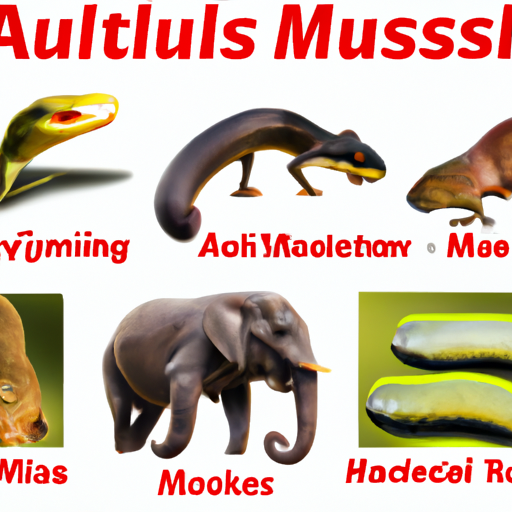 Introduction:
Introduction:
Muscles are the driving force behind animal movement, enabling them to navigate their environment, hunt, defend, and perform various essential functions. The process of muscle development, known as myogenesis, is a complex and fascinating journey involving multiple cellular and molecular mechanisms. This article aims to provide a comprehensive understanding of how animals build muscle, shedding light on the intricate processes that shape their strength and agility.
Embryonic Myogenesis:
The foundation of muscle development begins during embryonic development. In vertebrates, myogenesis commences with the migration and proliferation of mesodermal cells called myoblasts. These myoblasts differentiate into two distinct populations: the primary myotome and the secondary myotome. The primary myotome gives rise to the axial muscles, while the secondary myotome contributes to the muscles of the limbs and body wall.
Myoblast Fusion and Formation of Myotubes:
Following differentiation, myoblasts undergo a crucial process called fusion, wherein they merge together to form multinucleated structures known as myotubes. The fusion process is regulated by various signaling molecules, including myogenic regulatory factors (MRFs) such as MyoD and Myf5. These MRFs activate the expression of cell-adhesion molecules that facilitate myoblast fusion.
Muscle Fiber Formation:
Myotubes subsequently mature and develop into muscle fibers, which are the functional units responsible for muscle contraction. During this process, the myotubes align and elongate, acquiring specific characteristics based on the type of muscle they will form. Muscle fibers can be broadly categorized into two types: slow-twitch (Type I) and fast-twitch (Type II). Type I fibers possess a higher endurance capacity and are involved in sustained activities, while Type II fibers generate more force and are utilized for rapid and powerful movements.
Satellite Cells and Postnatal Growth:
Postnatally, muscle growth and repair are primarily mediated by a population of quiescent cells known as satellite cells. These cells reside outside the muscle fibers and play a crucial role in replenishing damaged or exhausted muscle tissue. Upon activation, satellite cells proliferate, differentiate, and fuse with existing muscle fibers, contributing to their growth and regeneration. This process is regulated by various growth factors and cytokines, such as insulin-like growth factor (IGF) and transforming growth factor-beta (TGF-β).
Hormonal Regulation of Muscle Development:
Hormones play a pivotal role in muscle development and growth. For instance, growth hormone (GH) and insulin-like growth factors (IGFs) promote muscle protein synthesis, thereby stimulating muscle hypertrophy. Additionally, testosterone, particularly in males, is a potent anabolic hormone that enhances muscle mass and strength. On the other hand, cortisol, a stress hormone, can have catabolic effects on muscle tissue, leading to muscle protein breakdown.
Exercise-Induced Adaptations:
Regular physical activity, especially resistance training and endurance exercise, induces remarkable adaptations in muscle tissue. Resistance exercise, such as weightlifting, stimulates muscle hypertrophy through a process called mechanotransduction. Mechanical tension applied to muscle fibers during exercise activates intracellular signaling pathways, prompting the synthesis of new contractile proteins and increasing muscle fiber size. Endurance exercise, such as running or swimming, enhances the oxidative capacity of muscles, promoting the growth of mitochondria and increasing the density of capillaries.
Nutrition and Muscle Development:
Proper nutrition is crucial for optimal muscle development in animals. Adequate intake of macronutrients, such as proteins, carbohydrates, and fats, is necessary to provide the building blocks for muscle growth. Proteins, in particular, provide essential amino acids that are vital for muscle protein synthesis. Moreover, specific amino acids, such as leucine, play a significant role in activating protein synthesis pathways. Carbohydrates and fats serve as the primary energy sources during exercise, ensuring optimal muscle function and recovery.
Conclusion:
The intricate process of muscle development in animals involves a series of cellular and molecular events, from embryonic myogenesis to postnatal growth and exercise-induced adaptations. Understanding the mechanisms behind muscle development provides valuable insights into enhancing animal performance and well-being. Further research in this field will continue to unravel the complexities of muscle biology, paving the way for advancements in sports science, animal physiology, and therapeutic interventions for muscle-related diseases.
